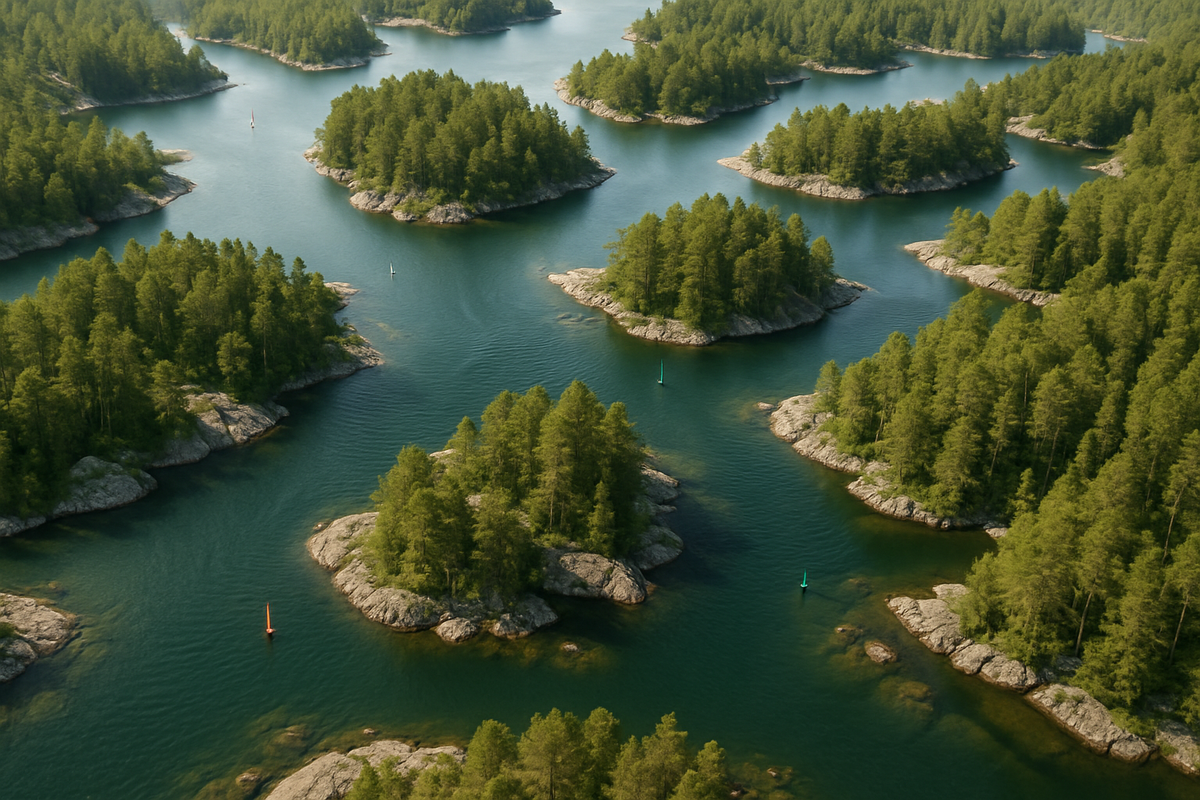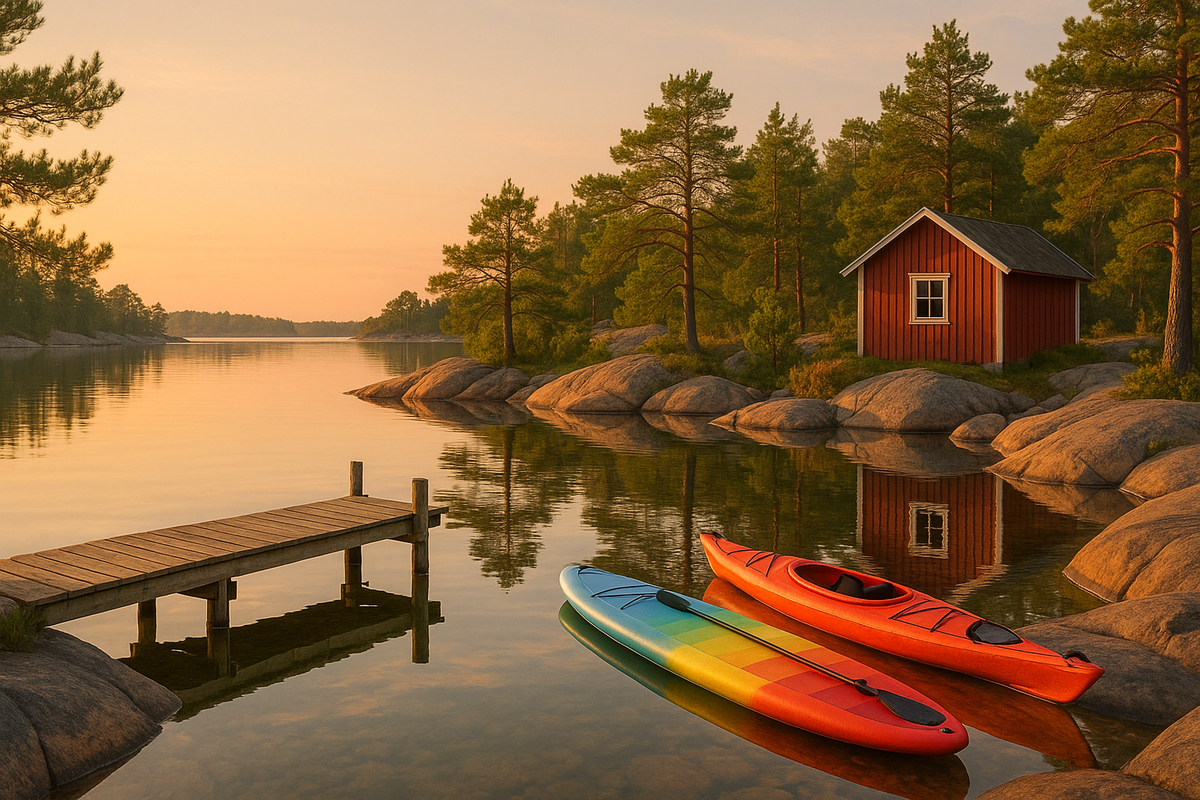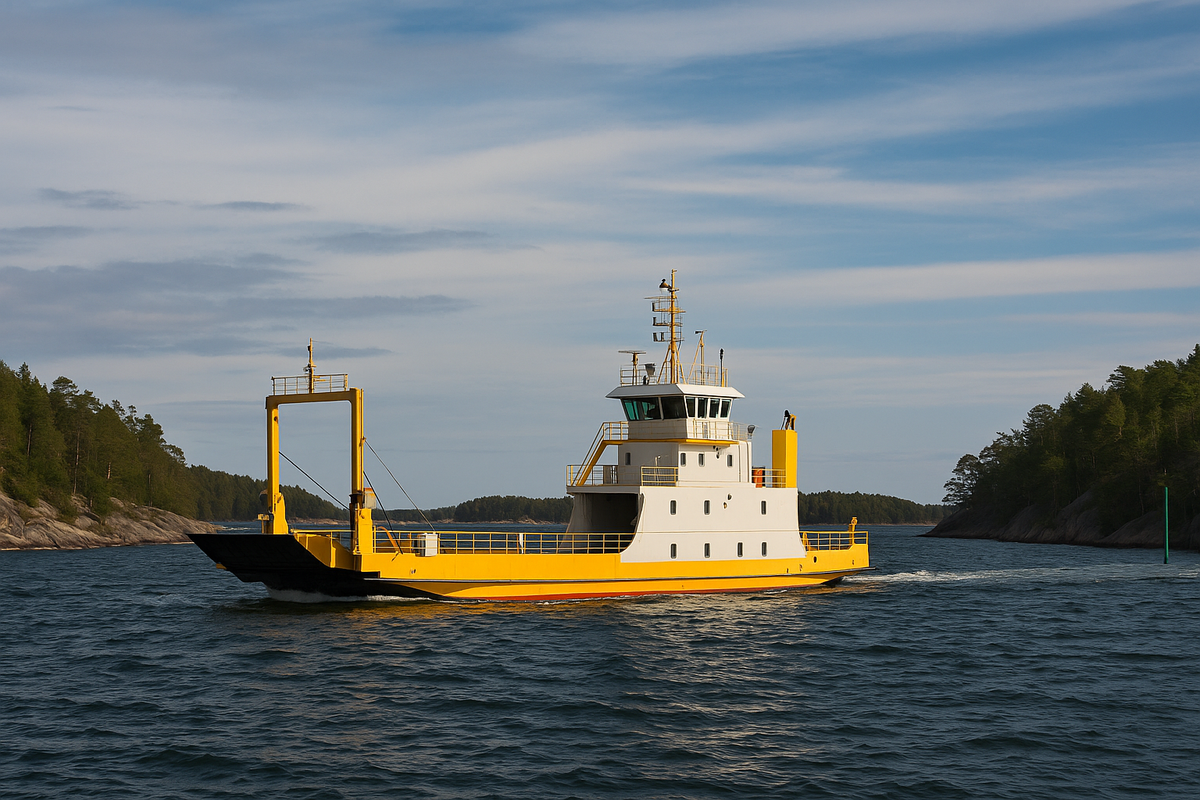🏝️ Turku and Åland archipelagos: downwind routes — warm bays, SUP and island hopping
This article is going to teach you everything you need to know about choosing leeward bays based on wind direction, where you'll find the water warmer and calmer, how to recognise upwelling and how to quickly change your plans. You'll be able to go from SUP/kayaking to island hopping and vice versa in no time at all! We will provide wind thresholds for everyone, from beginners to experienced sailors, and we'll have simple reference tables and micro-routes for those evenings when the breeze dies down and the water becomes like a mirror.

How to read the forecast and choose a route "downwind"
— Look at the wind (m/s) and gusts: it is the gusts that "make" the waves and throw beginners off their rhythm.
— Look for leeward: if the wind is blowing from the west, it will be warmer and calmer on the eastern shores of the straits and in the "pockets" between the islands.
— Check for upwelling: with steady winds along the coast, the water can "drop" by 2–5 °C per day — head for narrow straits or lakes.
Archipelagos by season: water characteristics and plans
Upwelling: why the water "fell" and how to restore warmth
If the water in the bay cools by 2–5 °C in a day or two, that's what we call upwelling. The solution is simple: leave the open edge and head for narrow channels and closed bays, or switch from the sea to lakes (in July–August, they often maintain a temperature of +18...+22 °C in shallow "pockets"). Early in the morning, you're more likely to find calm conditions — the water is calmer and warmer near the piers.
Warm places for swimming and evening SUP
— Turku Archipelago (Parainen–Nauvo–Korpo). The straits between the islands warm up faster; look for narrow "bottlenecks" on the map.
— Åland (Mariehamn–Jomala–Lemland). The inner bays, which are sheltered from the open waves, stay at +17...+21 °C in July.
— Life hack. The water near piers and in the "pockets" between rocks is always a degree or two warmer than on the open shore.

Island hopping and ferries: flexible planning
Archipelagos are a paradise for circular routes (Saariston Rengastie / Archipelago Trail). In autumn and winter, there are storm windows; in summer, there are wind fronts. Choose a flexible fare, allow for a buffer day, and keep an alternative "land + islands without water" option: forest loops, observation decks, and embankments. Check the ferry website for warnings on the day of departure; the weather often changes during the day, and the evening is calmer than the morning front.
Micro-routes "according to the forecast"
What to bring: a "capsule" for the sea and islands
You'll need some lightweight wind protection, sunglasses and SPF, non-slip shoes, and a thin buff/hat for when it gets a bit breezy in the evening. For the water, you'll need a PFD (life jacket), a waterproof phone case, a whistle and a dry bag with a layer. For the kids, we've got a towel poncho and a warm drink: even when it's +20°C, it can get a bit chilly after swimming. If you're a photographer, make sure you've got some spare batteries and a microfibre cloth. The sea air will drain your batteries and fog up your lenses.

Safety in brief
Gusts are more important than average wind speed; at 6–8 m/s, beginners should probably wait until the morning or go to narrow straits. Piers and rocks are slippery, so you'll need shoes with treads to keep your footing. When it comes to island hopping, go for a flexible fare and keep a day in case of storms. Just to let you know, the water's only for those wearing life jackets. And the kids should stay near the shore and be supervised.
Please feel free to share your thoughts in the comments below. If you have any interesting photos, personal experiences or questions about the topic of the article, please feel free to leave a comment. We'll absolutely get back to you, because we're making the most useful and popular blog about Finland!
❓ FAQ
Up to 4–5 m/s and only in sheltered straits. At 6–8 m/s, postpone your start or choose walking/cycling routes.
The water temperature has dropped by 2–5 °C in 24 hours with steady winds along the coast. Move to narrow straits or nearby lakes.
Most often in the inner bays and narrow straits of both systems. The outer shores are cooler due to waves/wind.
Yes. In autumn/winter and during summer fronts, delays/cancellations are possible. Choose a flexible fare and allow for a spare day.
Look at the direction: go to leeward (opposite exposure). For example, with a westerly wind, go to the eastern shores of the straits.
Early in the morning — it is often calmer and warmer near the piers. In the evening — beautiful light, but watch out for gusts.
The sea breeze makes it feel 2–4°C cooler. A thin windbreaker and a buff will keep you comfortable.
Walks along forest trails, piers in sheltered bays, short bike rides around the islands; water — in the morning/calm weather.
The narrow straits of Parainen–Nauvo–Korpo and the inner bays of Mariehamn–Lemland in calm weather — almost guaranteed "glass".
A lightweight windproof and waterproof jacket. In the Baltic, it adds 2–4 °C of "comfort" and makes evenings by the water warm even when there is a breeze.





0 comments
Log in to leave a comment